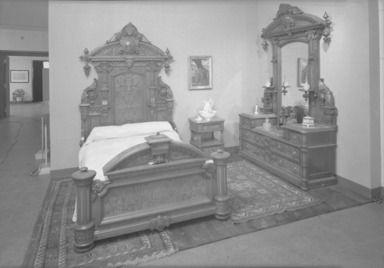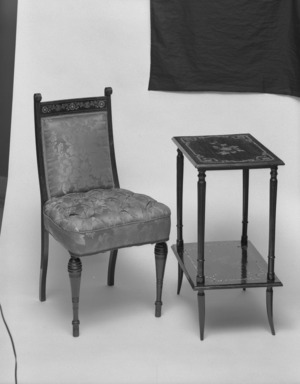

Victoriana, April 07, 1960 through June 05, 1960 (Image: PHO_E1960i004.jpg Brooklyn Museum photograph, 1960)
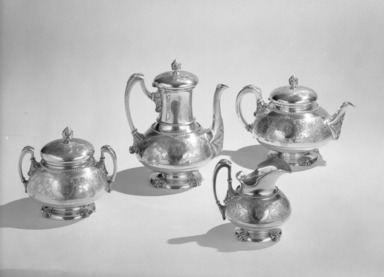
Victoriana, April 07, 1960 through June 05, 1960 (Image: PHO_E1960i005.jpg Brooklyn Museum photograph, 1960)
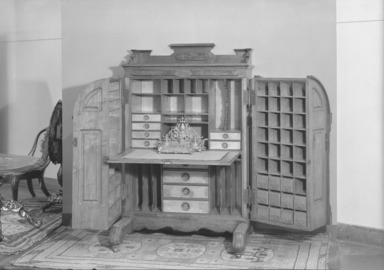
Victoriana, April 07, 1960 through June 05, 1960 (Image: PHO_E1960i006.jpg Brooklyn Museum photograph, 1960)

Victoriana, April 07, 1960 through June 05, 1960 (Image: PHO_E1960i007.jpg Brooklyn Museum photograph, 1960)
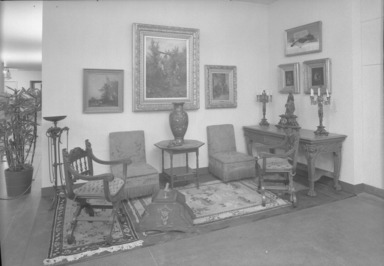
Victoriana, April 07, 1960 through June 05, 1960 (Image: PHO_E1960i008.jpg Brooklyn Museum photograph, 1960)

Victoriana, April 07, 1960 through June 05, 1960 (Image: PHO_E1960i009.jpg Brooklyn Museum photograph, 1960)

Victoriana, April 07, 1960 through June 05, 1960 (Image: PHO_E1960i010.jpg Brooklyn Museum photograph, 1960)

Victoriana, April 07, 1960 through June 05, 1960 (Image: PHO_E1960i011.jpg Brooklyn Museum photograph, 1960)
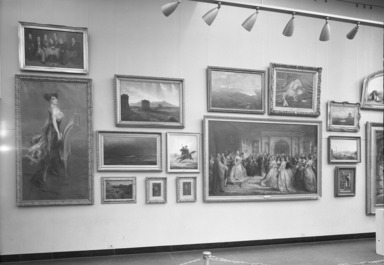
Victoriana, April 07, 1960 through June 05, 1960 (Image: PHO_E1960i012.jpg Brooklyn Museum photograph, 1960)
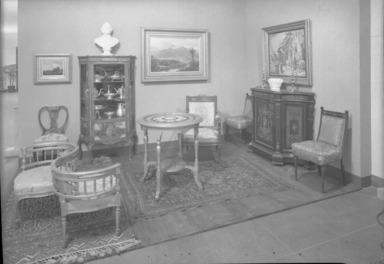
Victoriana, April 07, 1960 through June 05, 1960 (Image: PHO_E1960i013.jpg Brooklyn Museum photograph, 1960)
Victoriana
-
March 3, 1960
One of the most important decorative arts exhibitions of the year will be presented at the Brooklyn Museum beginning April 7th with the showing of VICTORIANA. Many of the celebrated objects created during the period of the American Industrial Revolution, from about 1840 through 1890, will be seen in this comprehensive Exhibition of one of the most controversial periods in American home furnishings and decor.
There will be more than 200 objects which have been criticized as monstrosities, absurdities, and examples of the deterioration of good taste. Their quality will be reconsidered along with works of such renowned names as Tiffany, Lenox, and Belter.
Marvin Schwartz, Curator of Decorative Arts for the Brooklyn Museum says that one of the main purposes of the VICTORIANA Exhibition is “to meet the current public demand for ideas in decoration, and assist today’s homemakers and designers in their effort to break away from the extremes of functional design by showing how the first industrial designers in America solved the problems of ornamentation."
Mr. Schwartz assembled this major Exhibition of Victorian paintings, sculpture, ceramics, silver, glass, furniture and textiles from museums and private collections throughout the United States including the Chicago Historical Society, the Wadsworth Atheneum, Henry Ford Museum, Samuel Kirk & Son of Baltimore, the Newark Museum Association, the Grand Rapids Public Museum and the Brooklyn Museum collections. The well-known curator describes the great variety collected for the Exhibition as “representative of the American Industrial Revolution when the newly discovered techniques of mass production were establishing new living trends in the decorative arts and design elements, with surprising combinations of period and style. Angels, cupids, flowers and leaves, swirls, curls, scrolls, and frills were used, but always with an undeniable charm that characterized the Victorian age.”
Of particular interest is the furniture of American designer, John Henry Belter. Belter’s work typifies the designer’s revolt against mass productions of the era and his attempt to create more elegance by reviving the Rococo styles. He used French Rococo motifs in a combination of handcarving and machine carving to achieve his results and went one step further by introducing startling realism in decoration, with fruit and flowers that seemed as if they might be picked, and animals that appeared ready to spring into action.
Among the many examples of John Henry Belter’s work will be a carved rosewood table with a marble top and a realistically carved reclining dog on the stretcher, a Rococo Revival rosewood sofa and table used in Abraham Lincoln’s Springfield home, and Belter’s patented bed of laminated wood, veneered in rosewood and decorated with pierced and raised carvings of cupids, flowers, leaves, grapes, and scrollwork which Belter claimed was superior to other beds because it overcame two hazards of the period by being “easy to disassemble in case of fire and containing fewer recesses to harbor bedbugs.”
Other outstanding pieces appearing in the VICTORIANA Exhibition include a silver service in late Classical Revival style made for the American wife of Joseph Bonaparte, brother of Napoleon, who had established his home in America; a rare Belleek pitcher in shell design made in 1887 by W.S. Lenox, founder of the successful American china manufacturing firms and several fine examples of Grand Rapids furniture, part of a bedroom suite in elaborate Renaissance style which had been exhibited in the Philadelphia Centennial of 1878.
Cast iron stoves, and a cast iron clock by the American Clock Company of New York with relief figurines standing on green urns, red pillars, and shrubbery, elaborately painted with a landscape scene embellished with vines and trees are other important Victorian pieces in the Exhibition.
The collection of unique, American-made porcelain sculpture and other decorative pieces from the Henry Ford Museum include a Parian ware vase supported by an eagle, and a figure of a girl kneeling and tieing her shoes while resting on a fringed pillow, both made in Bennington, Vermont. A porcelain pitcher embellished with a relief scene of a child with a chalice among gilded grape leaves and bunches of blue-painted grapes was manufactured in Brooklyn, and an elaborate Rose Bowl contains a naturalistically painted scene of blue sky and clouds with three cherubs floating on pink scarves, one bird-watching, another playing a flute and the third clutching a rabbit, made in East Liverpool, Ohio.
Mr. Schwartz sums up the colorful presentation by stating that “for lack of information, many items of major interest have been destroyed, hidden away in attic storerooms, or mutilated by ‘do-it-yourselfers’ who have unknowingly painted or remodelled valuable Victoriana. It is hoped that this Exhibition will draw attention to the documented objects of this fascinating period.”
The Exhibition of VICTORIANA, displayed in a series of period room vignettes, and silver, glass, and ceramics in arrangements showing the style and development of the eras may be seen in the Special Exhibition Gallery at the Brooklyn Museum from April 7th to June 5th.
Brooklyn Museum Archives. Records of the Department of Public Information. Press releases, 1953 - 1970. 1960, 013-16.
View Original -
March 25, 1960
On Sunday, April 3rd at 3:45 p.m., Mr. Schwartz, Curator of Decorative Arts at the Brooklyn Museum will present an illustrated lecture on AMERICAN TASTE OF THE VICTORIAN PERIOD.
Mr. Schwartz has recently assembled over 200 objects of art of the Victorian era from private and museum collections throughout the United States for the major Exhibition of VICTORIANA, opening at the Brooklyn Museum on April 7th. In addition to his current assignment at the Museum, he is serving as a Director of the Long Island Historical Society and on the Committee of Art and Preservation of the American Jewish Historical Society. His extensive writings include the article on Victorian furniture for the Concise Encyclopedia of American Antiques and, “Fine American Ceramics of the Victorian Period” which will appear in the April issue of Antiques magazine.
Mr. Schwartz considers Victorian taste to be an important influence today. “Design conscious people,” he says, “bored with modern trends, are turning to other fields of decoration such as the Victorian period for inspiration and ideas.” In his lecture Mr. Schwartz will present a timely and objective appraisal of the works of the period which marked the beginning of mass production in the decorative arts In America.
The public is invited to attend this admission free lecture at the Brooklyn Museum.
Brooklyn Museum Archives. Records of the Department of Public Information. Press releases, 1953 - 1970. 1960, 023.
View Original

